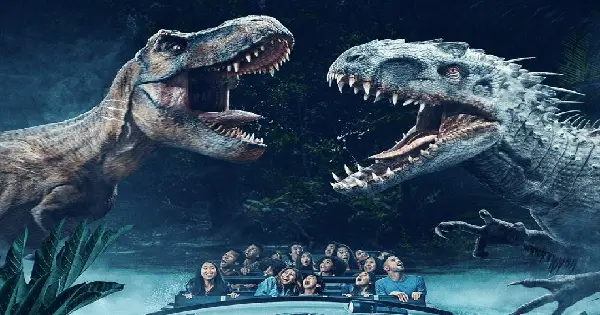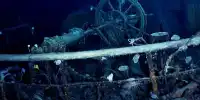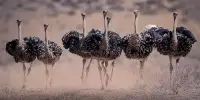Jurassic Park, directed by Steven Spielberg, brought dinosaurs to the big screen in 1993, sparking a love of dinosaurs for generations to come, even if they were a little featherless. The franchise has continued to evolve as we’ve learned more about dinosaurs and prehistoric reptiles, and in its most recent installment, Jurassic World Dominion, it appears that some of the non-human stars have got a makeover. Dr. Steve Brusatte, an evolutionary scientist who specializes in the anatomy and evolution of dinosaurs, among other things, may have something to do with it (including fanged flying reptiles).
Director Colin Trevorrow invited Brusatte to advice on Jurassic World Dominion because of his many publications (including his most recent book, The Rise and Reign of the Mammals), so we had a chat to find out what it’s like working as a scientist on a Hollywood blockbuster and which new species were making their franchise debut. Is being an advisor on Jurassic World Dominion like living the dream for you as a paleontologist and – presumably – Jurassic Park fan? It’s weird, and it’s one of the greatest awards I’ve ever received. I distinctly recall viewing the original picture in the theatre with my father and brothers in 1993. I was nine years old at the time.
Those dinosaurs looked incredibly lifelike, as though they were genuine animals rather than the dreary caricatures from school and the library. My brother, Chris, was really moved by the picture. He transformed his room into a dinosaur museum, which turned out to be a Jurassic Park museum. Chris and his dinosaurs provided the soundtrack to my boyhood. He won me over after a few years, and by the time I was in high school, I wanted to be a paleontologist. As a result, Jurassic Park paved the route for me to get to where I am now.
Is there a lot of strain on a scientific advisor when they’re attempting to reconcile the fossil record with the Hollywood demand for “larger, scarier, more fangs,” as Jurassic World puts it? I didn’t feel pressed; instead, I felt privileged. What a dream come true to be able to communicate this obscure dinosaur science that I’ve been studying for decades to hundreds of millions of people across the world in a blockbuster film.
I honestly believe that no other form of communication can reach as many people as a blockbuster. So it doesn’t worry me if these dinosaurs aren’t flawless and there is some artistic license. It’s far more significant to me, for example, that moviegoers all across the globe will now be able to witness feathered dinosaurs on the big screen, as they were in real life. I aim to be realistic as a consultant. It’s my responsibility to stand up for science, to make sure that the director, writers, and artists are always aware of the truth of dinosaurs and fossils.
And I’m confident they’ll take my advice and weigh it against a variety of competing interests, such as the need to make their characters engaging, relatable, and recognizable as characters on screen, the need for their dinosaurs to be movie monsters that carry a plot in some cases, and the fact that the original Jurassic Park established a certain Jurassic design that must be maintained.















